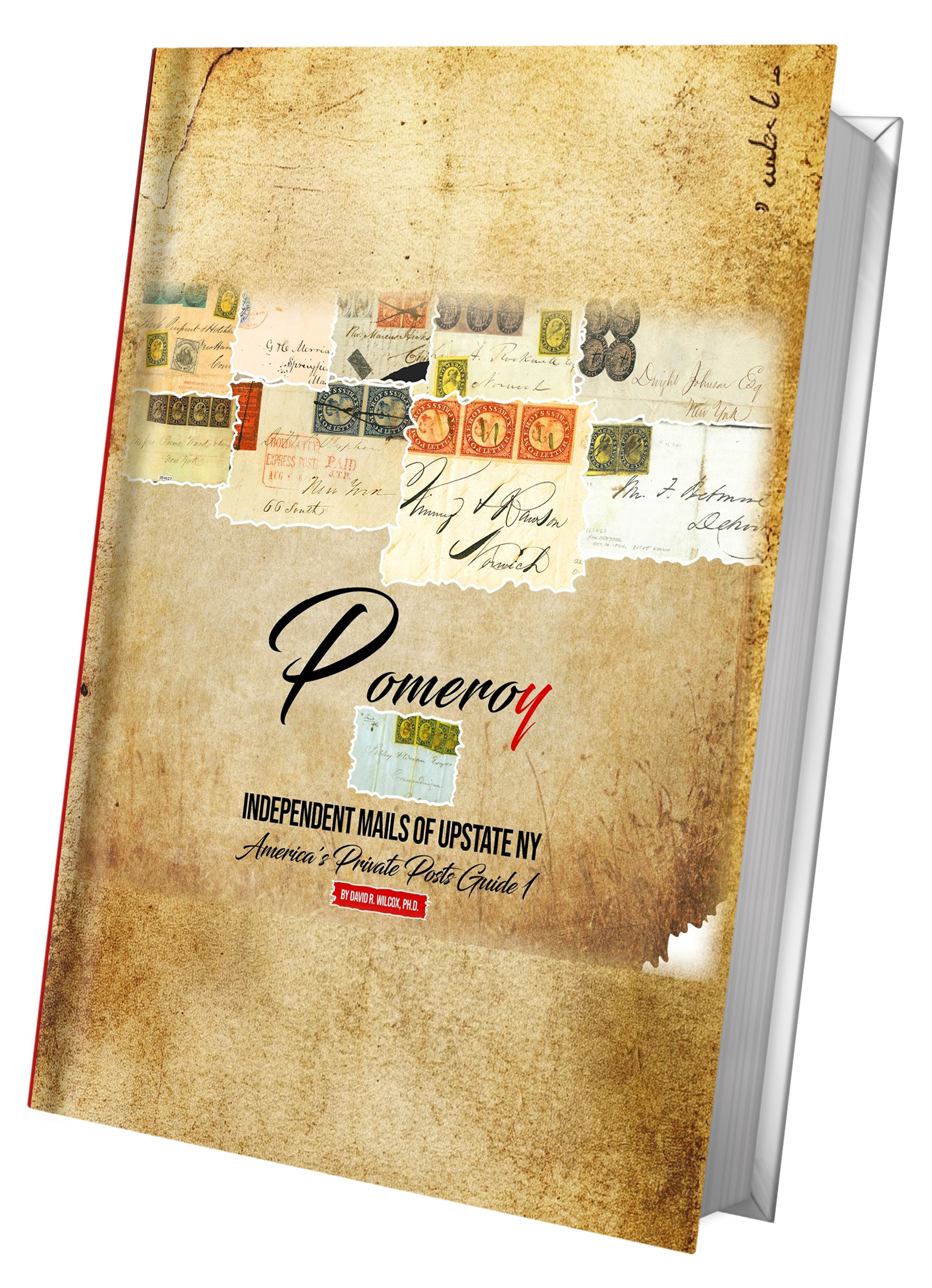
About The Books
Pomeroy, Independent Mails of Upstate NY is the first in a series of Guides entitled America’s Private Posts. The series chronicles the private mail carrying companies of the mid to late 1800’s that challenged the US Government’s Postal Service. From the beginning, the US government had a monopoly on carrying the country’s mail, but it abused the role because of various lucrative contracts, cronyism, and corruption. Postal rates were so high that entrepreneurs entered the market with lower rates and faster deliveries. They were so successful that the government finally had to enact laws to shut them down. But this entrepreneurial American spirit forced lower rates and a stronger postal system as America expanded westward.
The series of GUIDES details these early posts and their stamps and covers. Some of the private posts traveled between cities using railroads, stagecoaches, and steamships to transport letters for their patrons. Finally, the government enacted an 1845 law that declared most roads and waterways were the government’s exclusive postal routes. This law put these early independent companies out of business and stopped them from taking away from government profits.
These initial private postal services, known as the Independent Mails, are detailed in GUIDES 1 and 2. The first GUIDE focuses on Pomeroy’s Letter Express and the other three active posts in upstate NY (332 pp.). GUIDE 2 covers the remaining five posts that were active in New England and Pennsylvania (310 pp.). In the first two GUIDES, over a dozen essays are also included that focus on many aspects of the companies’ stamps. New discoveries and added information from the surveys that were not available before, now give us a clearer understanding of the posts.
These poorly understood Independent Mails were privately owned, and unlike the government, they left behind little information on their day-to-day operations. Not a single ledger or year-end report has been found. Almost all we know about them is from the letters that survived the last 180 years. In GUIDES 1 and 2, a survey of over 1300 covers is presented. Each cover is described for addressee, origin, destination, postal markings, auction activity and the provenance of the cover. Over ninety percent of the covers are illustrated, and most are in full color.
In addition to the covers, a concise history of the posts is presented based on the surveys. The major correspondences are discussed. Enlarged images show the plating of the stamps. Detailed images of the common forgeries are presented. Faked covers are illustrated and described. Double impressions, double transfers and major plate marks are explained and enlarged. The order of printings and the variation in colors are discussed. Distribution graphs show when the posts existed, and the graphs show the relationship and competition between the posts. A detailed Table of Contents, definitions of common philatelic terms, and an extensive list of references are also included.
The US government Initially only supplied delivery to their post offices in the cities, but not to the homes of the addressees. This allowed entrepreneurs to again fill a gap the government ignored until later. Intra-city mail delivery companies, known as Locals and Carriers (the latter had government ties), transported mail to and from post offices for a small fee. The other GUIDES in the America’s Private Posts series detail the Local and Carrier companies.
The GUIDES arose from the completion of a 10,000-cover survey of all known Local and Carrier stamps on surviving covers from the 151 companies and their 747 stamp issues. Single off-cover stamps were surveyed when numbers were manageable. Guides 3 through 6 focus on New England, New York, and New Jersey. Later GUIDES cover the posts of Pennsylvania, Maryland, and the West.
